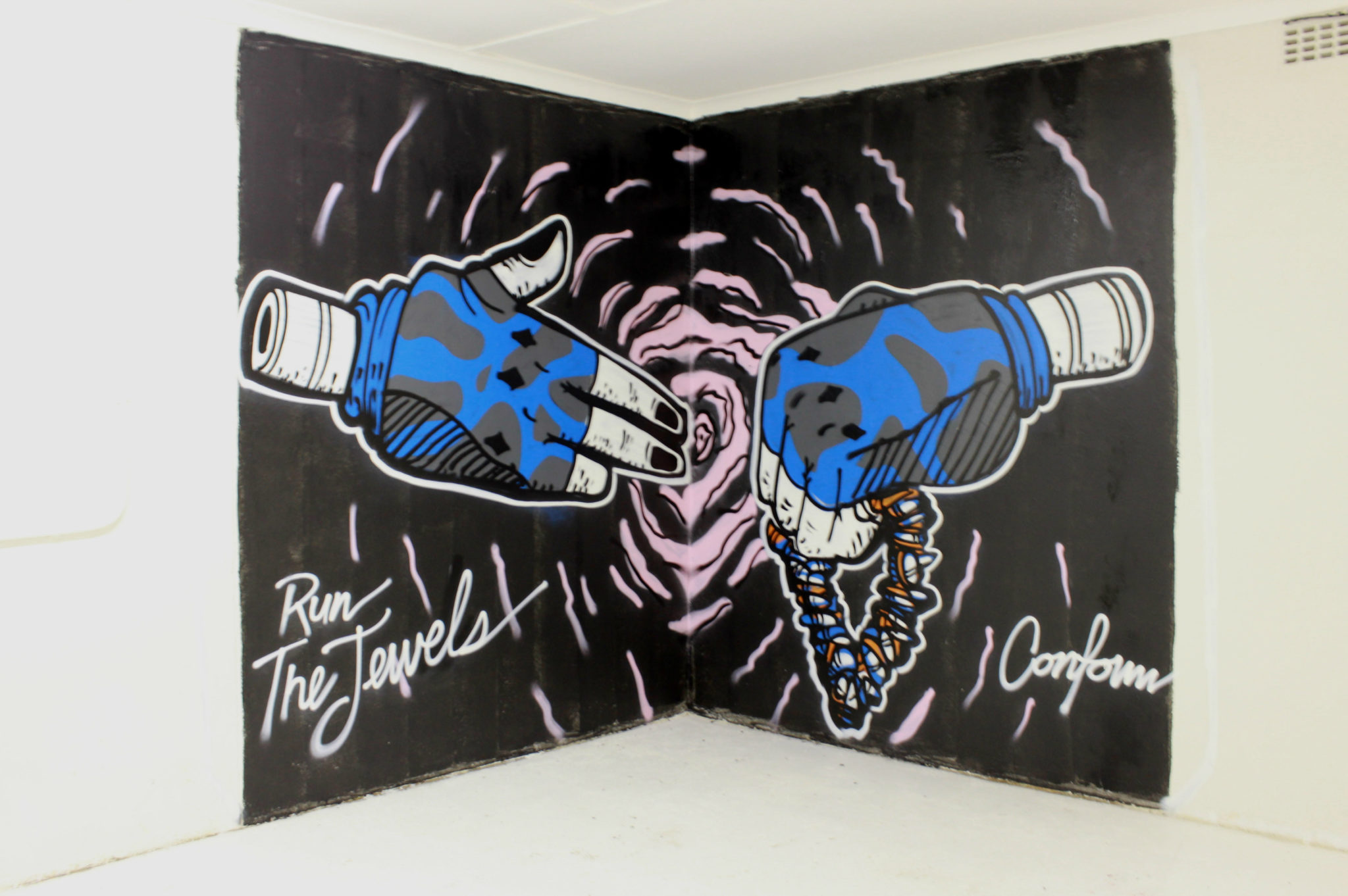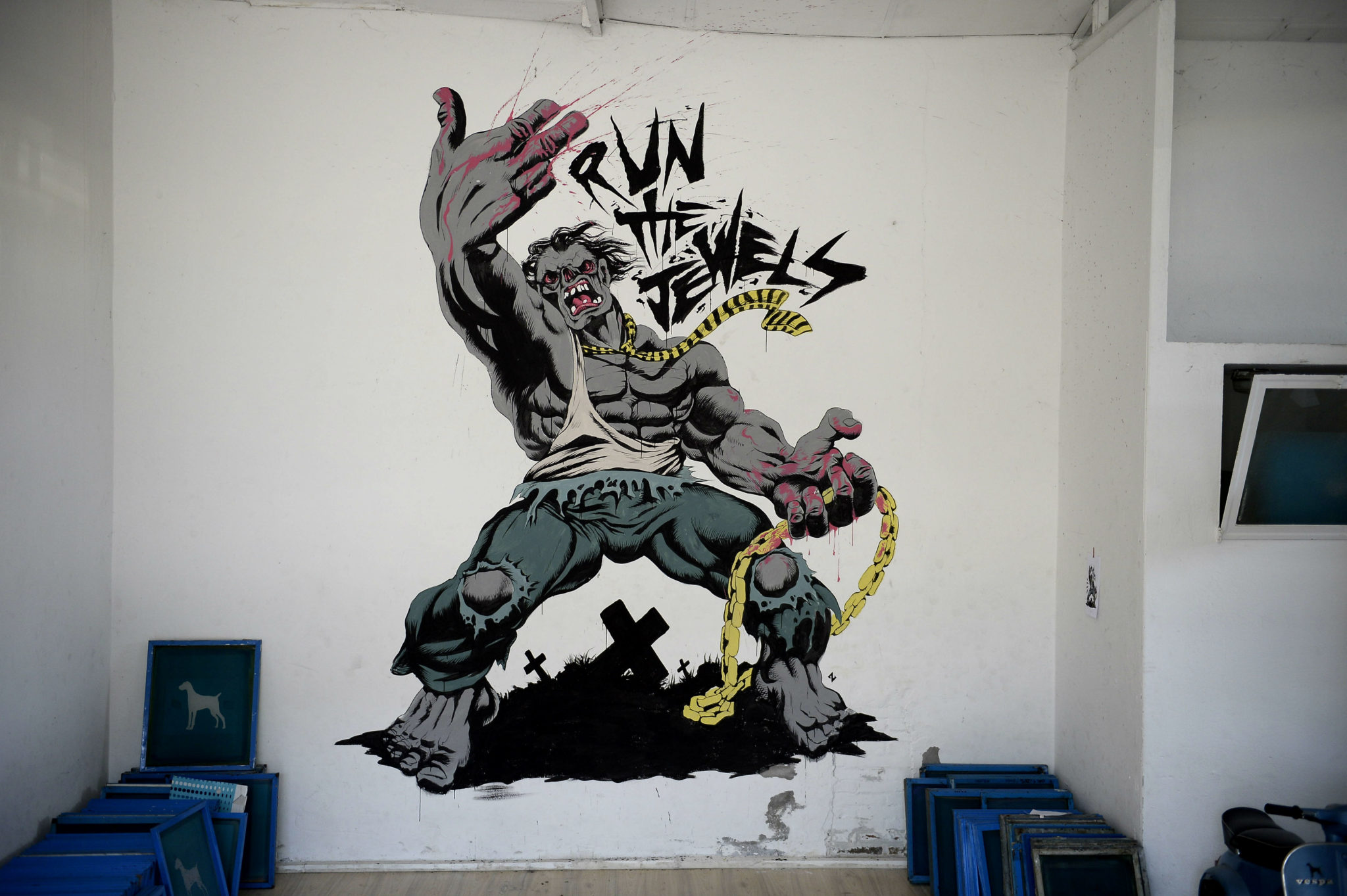Brands
What Can Brands Learn About Marketing From Street Art?
When you think about the intersection of branding and art, Andy Warhol is probably the first person who pops into your head. Warhol managed to take a Campbell’s soup can and make it cool. He took a Coke bottle and made it edgy. His career as a commercial illustrator exploded as he explored the relationship of artistic expression and branding.
While pop artists like Warhol and Roy Lichtenstein showed that brand logos could be creative and have an impact on the general public, brands still have a lot to learn from the art world. Today, brands looking to stand out may not be able to give Warhol a call, but they do have another option worth exploring: contemporary street artists.
Street artists have the style, personality, and respect capable of conveying a powerful message. And while brands may not have the artistic instincts to create a masterpiece, some have the budgets to hire the people who can.
A few companies have already ventured into the world of fine art with positive results. For those who may be reluctant to take the plunge, here are two important ways brands can benefit from street art.
Using icons
Brands that want to create iconic content don’t necessarily need to buy the most expensive celebrity endorsers or pay for special effects. Simple visuals can convey powerful messages.
In 2014, Amaechi Uzoigwe, manager of hip-hop duo Run the Jewels, launched a campaign called “Tag The Jewels” in order to promote the group’s latest album, Run the Jewels 2. The campaign was a worldwide street art initiative, which received the support of over 30 artists across six continents. Street artists remixed the duo’s iconic album cover art, originally designed by Nick Gazin, which features two bloody mummified hands, one forming a gun, the other holding a thick gold chain.
By Conform in Cape Town, South Africa
“Icons are incredibly important in terms of making an impact,” Uzoigwe said. “If you are lucky enough to come up with an icon that people identify with, it can be pretty powerful.”
The campaign was a success because it didn’t try to superficially plaster meaning onto a meaningless image. Propelled by the graffiti promotion, the album sold more than 80,000 copies and had half a million free downloads.
Uzoigwe stressed that there wouldn’t have been any successful promotion without high-quality music, but within the last few years, the combination of street art and branding has had a lasting impact. The Run the Jewels campaign has already inspired covers for Marvel comics, and is the driving force behind Art the Jewels, an art show in San Francisco that just opened.
By Luca Zamoc in Modena, Italy
It’s also worth pointing out that brands don’t always need to create original icons, they can also rely on the fame of characters and symbols that are already recognizable. For example, Oak Oak, a French street artist, uses pop-culture icons (ranging from The Simpsons to Calvin and Hobbes) in order to grow his own personal brand as an artist.
“They don’t represent a majority of my work, [but] they do appeal to the public more … because they recognize those icons,” he explained. “They are too many serious things out there, a little lightness won’t hurt.”
One brand that took this sentiment and ran with it is Dove, which used famous cartoon characters like Marge Simpson to Velma Dinkley to advertise its beauty products.
Source: adsoftheworld
Incorporating a famous character into a visual is not as easy for brands as for street artists who have an easier time dodging copyright lawyers. Brands need to obtain permission from the copyright owner and pay licensing feeds to use the character. But for the right campaign, and with enough artistic oversight, that investment can bring in a lot of value.
Creative freedom
Federico Massa, aka Iena Cruz, is an Italian street artist who has branded himself expertly by staying true to his artistry. In 2011, he was contacted by Marc Jacobs and painted 60 bags for a promotion of Paris Fashion Week at Printemps, a high-end department store in the heart of Paris. He was given no guidelines and no restriction.
“It’s not often that a project like that happens, but when it does I always jump at the opportunity. It’s pure art when you can let your creativity loose without limitations,” he said.
The takeaway? Brands shouldn’t approach street artists with rigid ideas of what they want them to produce.
“Sometimes they think because I am a painter I can do whatever they want me to do, even if it’s not my style,” he explained. “My strategy is to always find a way to express myself with my personal style without compromising my integrity.”
Cruz believes brands should be as forthcoming as possible and share their corporate histories with the talent because it will help the artist form ideas and shape a story. “I like to learn the history and figure out where my art can fit in” he said. “I have had a few very good experiences where my art was used to promote in ways that I felt comfortable with and proud of.”
In order to understand the core nature of a brand, marketers can benefit by looking at their companies with the fresh perspective of an artist. Two years ago, Cruz participated in a campaign for Heineken. The company asked for him to make an installation inside a shipping container at the Brooklyn Navy Yard for the launch of a new bottle.
Source: Iena Cruz
As you can see in the picture above, Cruz did not just design a beer bottle; rather, he used the brand’s archetypal colors for his palette. “They never questioned my choice, and the concept was approved without question,” he said. “That is not a typical situation, but it does happen.”
Marketers constantly talk about authenticity, edge, and uniqueness, but those claims usually come across as lip service. If they’re really interested in coloring outside the lines, they should take a closer look at the street art scene. Brands that think about cultivating icons, creating honest advertisements, and offering room for creative freedom will allow street artists do what they do best: amaze.
A previous version of this story incorrectly stated that Run the Jewels was launched in 2012; it was launched in 2014.
Image by jdwfotoGet better at your job right now.
Read our monthly newsletter to master content marketing. It’s made for marketers, creators, and everyone in between.








